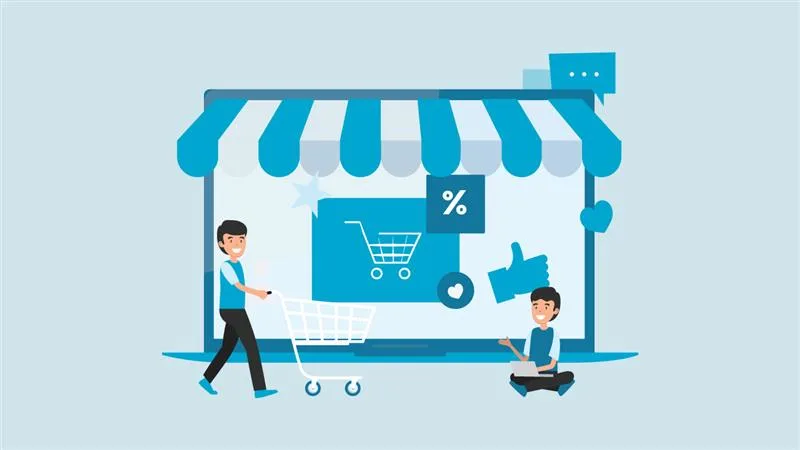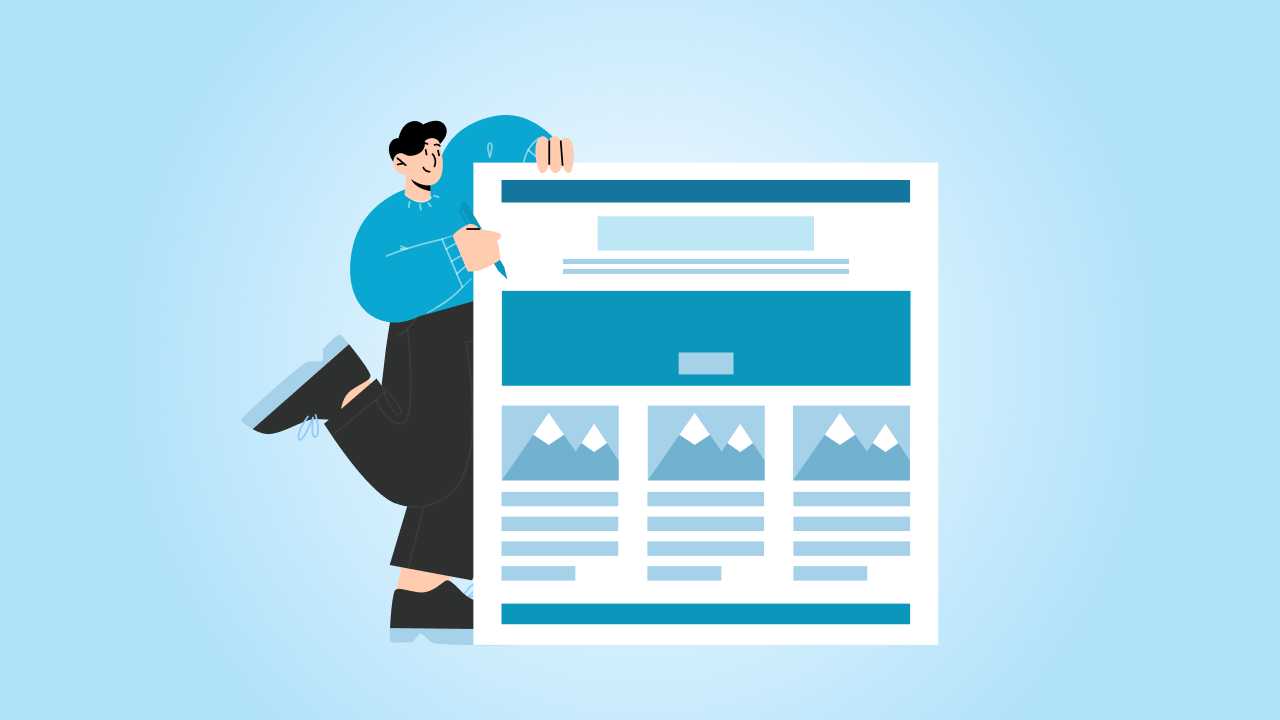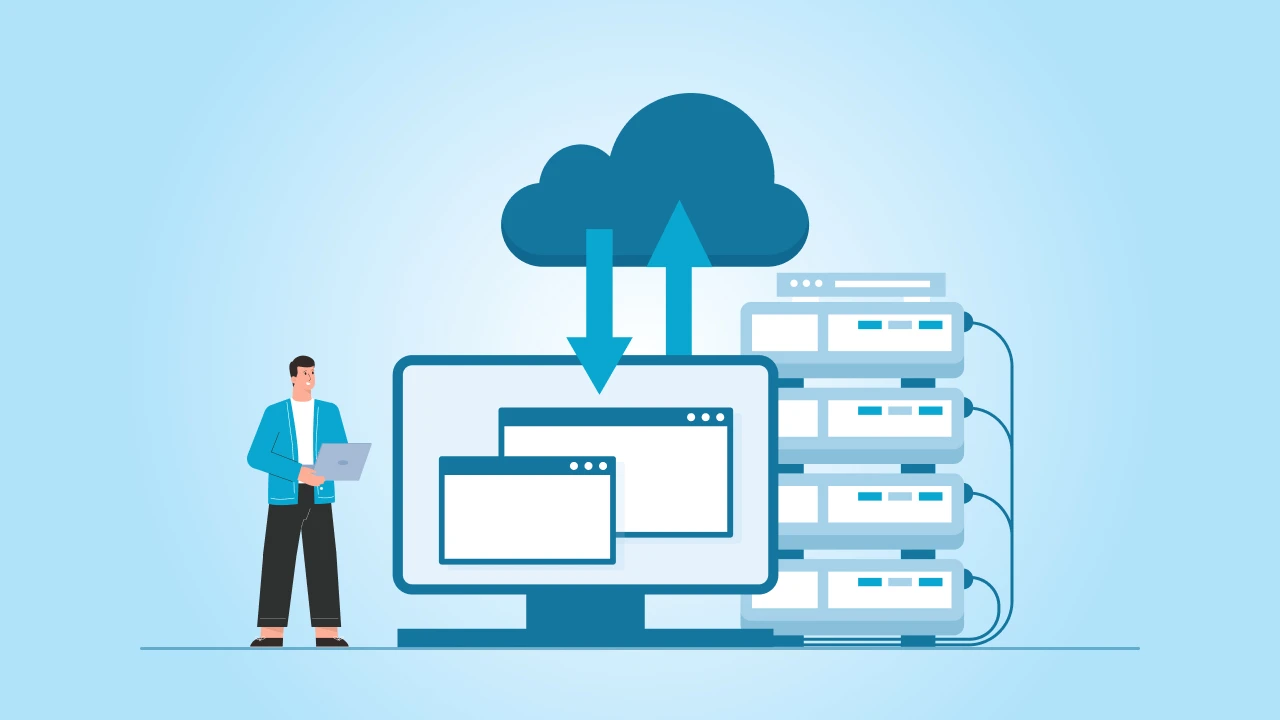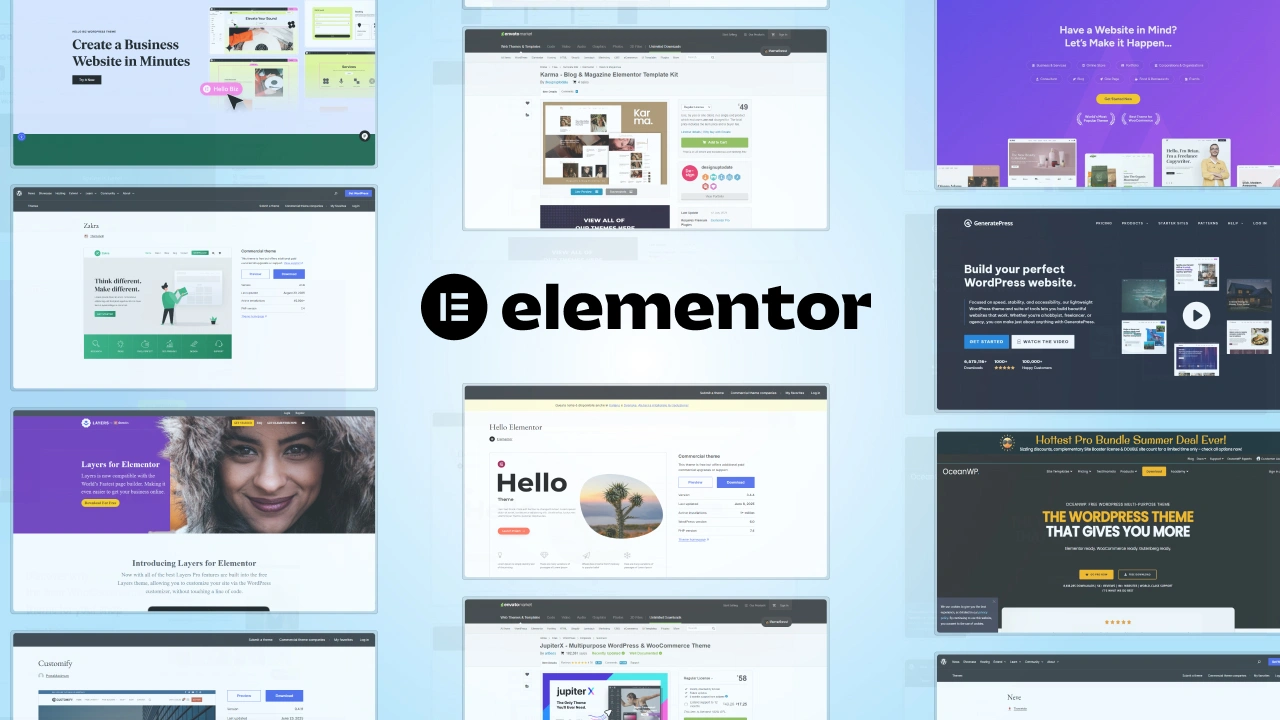Running an online store today isn’t as simple as it used to be. Not long ago, you could set up a basic website, list your products, and customers would come. Everything — your website design, product pages, checkout — was all packed into one system, and it just worked.
But things have changed.
Now, shoppers expect fast websites, personalized experiences, and the ability to buy from anywhere — their phones, apps, even social media.
That’s where headless eCommerce platform comes in.
It might sound a little strange, but the idea is simple: it gives you more control over how and where you sell online.
In this guide, I’ll explain what headless eCommerce really means, how it works, and why so many businesses are making the switch.
⏰ 60-Second Summary
- Headless ecommerce platforms separate the front end (what customers see) from the back end (where you manage products, orders, and payments), giving businesses more design freedom and performance control.
- Unlike traditional ones, using a headless CMS allows you to create content-rich, flexible shopping experiences across websites, apps, and other channels — all from a single source.
- One of the major benefits of headless is faster site speed, better customer experiences, and the ability to sell on multiple platforms without being tied to outdated templates or slow workflows.
- Brands with strong integration capabilities can connect their headless setup to a wide range of tools — from marketing software to inventory management systems — making it easier to scale and adapt over time.
- Headless commerce is ideal for growing businesses that want full creative control, better performance, and the flexibility to keep up with the fast-changing world of eCommerce.
Traditional eCommerce: How It Used to Work
In the old setup, everything was bundled together.
The front end — what customers see, like your homepage, product pages, and checkout — was tightly connected to the back end — where you manage products, inventory, orders, and everything else behind the scenes.
It was all part of one system.
If you wanted to make changes to how your store looked or worked, you had to work within the limits of that system. Sometimes that meant using pre-built templates or sticking to certain features, even if they didn’t fit your exact needs.
This “all-in-one” approach made it easy to set up a store quickly. But as customer expectations grew — faster websites, custom designs, shopping across multiple devices — this setup started to feel a bit… cramped.
Changing even small things could get tricky.
You’d often need developers to step in, and even then, you could only customize so much before you ran into limits.
That’s why businesses started looking for something more flexible.
Headless commerce platforms were built to solve this problem — giving brands more freedom to design unique experiences without being boxed in by traditional systems.
At cmsMinds, we help brands build flexible, high-performance eCommerce experiences with the right headless CMS and platform strategy.
What is a Headless eCommerce Platform?
Now that you know how traditional eCommerce platforms work, let’s talk about what makes headless eCommerce different.
At its core, a headless eCommerce platform separates the front end (what your customers see) from the back end (where everything is managed). The two parts are connected through APIs, which allow them to talk to each other without being tightly locked together.
This setup is often called headless architecture — and it gives you the freedom to design your store however you want, without being limited by the rules of an all-in-one system.
With headless commerce, you can build a fast, flexible, and personalized shopping experience that works across websites, mobile apps, social media, and more.
It’s especially useful for growing businesses that want full control over how their eCommerce store looks, feels, and performs.
Instead of working around the platform, you’re free to create exactly what you need — and scale it as your business grows.
Key Components of a Headless System
When you hear people talk about headless commerce solutions, they’re usually talking about a setup with a few key parts working together.
First, there’s the back end — the engine behind the scenes. This is where your products, orders, payments, and customer data are managed. It’s the business side of your eCommerce store.
Then, there’s the front end — what your customers see and interact with. This could be your website, a mobile app, or even a shopping experience inside social media platforms.
Between the two is the real magic: APIs (short for Application Programming Interfaces).
APIs let the front end and back end communicate smoothly without being stuck together like in traditional systems.
This approach is called headless commerce architecture.
It gives businesses the flexibility to build a shopping experience that’s faster, more customized, and more suited to their brand, instead of being tied down by the limits of a traditional setup.
The headless platform you choose — whether it’s Shopify’s Hydrogen, BigCommerce, or another option — acts as the foundation. It manages the back-end operations, while giving you the freedom to build whatever front-end experience you want.
Because you can mix and match tools depending on your needs, you’ll often hear people say that headless requires a strong tech stack — a combination of different technologies and services working together to create the final experience.
Benefits of Headless eCommerce
Switching to a headless setup might sound like a big change, but it comes with some major advantages — especially for growing ecommerce businesses that want to stay competitive.
Here’s why more brands are moving toward headless solutions:
1. Full Creative Control
With a headless setup, you’re not locked into the same templates or design rules as everyone else. You can build unique, personalized shopping experiences that truly match your brand.
2. Faster Websites, Better Performance
Because the front end is separate, you can optimize it for speed. Customers get a smoother, faster experience, and faster sites often mean higher sales.
3. Omnichannel Selling
Want your products available on your website, mobile app, and even smart devices? With headless, it’s easy. A headless CMS helps you manage your content and products from one place, and send it wherever you need.
4. Easier to Scale and Grow
As you add new products, markets, or sales channels, your system can grow with you — without needing a complete rebuild every time.
5. Freedom to Choose the Best Tools
With traditional systems, you’re often stuck with whatever features come built-in. Headless setups let you pick and choose the best tools for the job — whether it’s selecting the best headless ecommerce platforms or integrating new marketing apps.
Of course, there’s a flip side too.
Headless isn’t always the easiest road. If you’re not careful, you can run into an arduous development process, especially if your tech team isn’t ready for it. Building everything from scratch takes more planning, time, and the right partners.
But for businesses that want more freedom, faster growth, and better customer experiences, headless is often worth the effort.
Challenges to Be Aware Of
While headless eCommerce has a lot of benefits, it’s not a perfect fit for everyone. Before you make the jump, it’s important to understand some of the challenges you might face.
1. More Technical Work
With headless, you have to build and connect the front end and back end yourself. It’s not like using an all-in-one website builder. You’ll need developers who are comfortable working with modern development tools like APIs, frontend frameworks, and cloud services.
2. Higher Upfront Costs
Because you’re building more custom solutions, the setup can cost more at the beginning. It’s an investment — and while it often pays off long term, it’s something smaller businesses need to plan for.
3. Managing Multiple Software Platforms
In a headless setup, you might be using different tools for content, payments, checkout, and marketing. Managing all these software platforms takes organization and can get complicated if you’re not ready for it.
4. Not Always Necessary for Smaller Stores
If you’re running a simple shop with a few products and limited sales channels, headless might be more effort than you need. It’s often a better fit for growing brands or enterprise ecommerce businesses that need a lot of flexibility and customization.
Tip: Headless eCommerce opens a lot of doors, but it’s not a one-size-fits-all solution. Understanding the challenges early can help you make smarter decisions and avoid surprises later.
Popular Headless eCommerce Platforms (With Quick Comparisons)
If you’re considering a headless commerce approach, choosing the right tools is one of the biggest steps.
The good news? You have some excellent options — whether you’re starting fresh or building on your existing tech stack.
Here’s a closer look at some of the top choices:
1. Shopify + Hydrogen
Shopify is known for making eCommerce easy, but it’s also stepping into the headless world in a big way.
Hydrogen is Shopify’s React-based framework, built specifically for creating custom storefronts. It’s designed to be fast, flexible, and optimized for Shopify’s ecosystem.
With Shopify’s commerce cloud handling the heavy lifting — like payments, security, inventory, and checkout — you can focus on building a completely unique front-end shopping experience.
| Strengths | Things to Know |
|---|---|
|
|
2. Sanity
Sanity is a flexible headless CMS that’s perfect for brands focused on storytelling, content marketing, and personalization.
Traditional CMS platforms often come with big limitations — slow workflows, rigid templates, and painful publishing processes. Sanity helps overcome these traditional CMS limitations by giving you real-time editing, flexible content models, and easy integrations.
When combined with a commerce backend operations like Shopify, BigCommerce, or Commerce Layer, Sanity helps power rich, dynamic shopping experiences.
| Strengths | Things to Know |
|---|---|
|
|
3. BigCommerce
BigCommerce is a strong player in the headless market, offering robust APIs and ready integrations with leading frontend frameworks like Next.js or Gatsby.
It’s ideal if you want to move toward headless without losing built-in features like checkout, promotions, and tax handling. BigCommerce also supports both B2C and B2B selling very well, making it a smart choice for scaling brands.
| Strengths | Things to Know |
|---|---|
|
|
4. Commercetools
Built entirely around APIs from the start, Commercetools is one of the purest headless platforms out there.
It’s made for brands that want full control over every aspect of the shopping experience — from catalog management to checkout flow — using modern development tools and custom frontend designs.
It’s highly scalable and extremely flexible, but it’s best suited for companies that have strong technical teams or eCommerce development agency partners.
| Strengths | Things to Know |
|---|---|
|
|
5. Contentful + Commerce Layer
This is a great combo if you want content and commerce handled separately but smoothly.
Contentful provides flexible, fast content management, while Commerce Layer handles transactions, pricing, and inventory.
This setup is perfect for brands that already have an existing tech stack and want to plug in powerful eCommerce functionality without ripping everything apart.
| Strengths | Things to Know |
|---|---|
|
|
Bottom line:
Each platform has its strengths. If you want a faster launch with reliable support, Shopify + Hydrogen is a great bet. If you’re building a highly customized, global store with a strong dev team, Commercetools might be your best friend.
The key is choosing what fits your goals, resources, and customers — not just what’s newest or flashiest.
Is Headless Right for You? A Quick Decision Framework
Going headless sounds exciting, but it’s not the right move for every business.
Before you make a decision, it’s smart to step back and look at where you are — and where you want to go.
Here’s a simple way to think about it:
Headless could be a great fit if…
- You want full control over your ecommerce site design and user experience.
- Your business is growing fast and needs to sell across different channels (website, app, marketplaces, even in-store kiosks).
- You’re frustrated by the limits of your current platform and want to build something custom.
- You have a good Web development team (or a trusted agency) to help build and maintain your headless system.
- You need stronger tools for inventory management, personalization, or mobile optimization than your current platform allows.
- You’re already using or planning to use systems like Salesforce Commerce Cloud and want to customize your front end while keeping a powerful backend.
You might want to wait (or rethink) if…
- You’re a small store with a simple product catalog and a limited budget.
- You don’t have technical resources and want something you can easily manage without developers.
- You mainly care about speed and simplicity, not heavy customization.
- Your current platform is still meeting your needs without major roadblocks.
How to Get Started with Headless eCommerce
If you’re ready to explore headless commerce, it’s important to have a clear plan before you dive in.
Here’s a simple step-by-step way to get started the right way:
1. Define Your Goals
Before you pick any tools, get clear on why you’re moving to headless.
Are you trying to speed up your site? Create a unique customer experience? Sell across new channels?
Knowing your goals will help you choose the right ecommerce platform and tech stack.
2. Choose the Right Backend
You’ll need a strong backend to manage products, customers, payments, and orders.
This could be something like Shopify, BigCommerce, or even enterprise systems like Salesforce Commerce Cloud — many of them now offer strong headless ecommerce platforms that are ready to integrate with custom front ends.
3. Pick Your Frontend Tools
This is where you design the customer experience.
You can use frameworks like Next.js, React, or Vue.js to build the storefront exactly how you want it. Some businesses also pair these with a headless CMS like Sanity or Contentful to manage content separately.
4. Set Up Your APIs and Integrations
Since headless setups rely on APIs, this step is crucial.
You’ll connect your frontend to your backend, and also hook up any extras you need — like payment providers, inventory systems, marketing tools, and customer service apps.
5. Launch, Test, and Optimize
After everything’s connected, it’s time to launch.
But headless is flexible for a reason — you’ll want to keep testing, tweaking, and improving over time to get the most out of your setup.
Building on a headless architecture gives you the freedom to create exactly what your brand needs — without being boxed in by the limits of traditional platforms.
It takes more upfront work, but the long-term benefits for performance, personalization, and scalability are often worth it.
Conclusion
Headless eCommerce isn’t just a passing trend — it’s a smarter, more flexible way to build and grow your online business.
By separating the front end from the back end, headless ecommerce platforms give brands more control, speed, and freedom to design the experiences customers really want. Whether you’re selling on a website, an app, or even through social media, headless setups make it easier to keep everything connected and performing at a high level.
Pairing a strong backend with a flexible headless CMS also gives you the ability to manage content across multiple channels without the slowdowns that come with older systems.
Of course, headless isn’t a magic solution. It takes planning, technical resources, and a willingness to rethink how your store is built. But for many brands, the benefits of headless — better performance, faster updates, full creative control, and the ability to scale — far outweigh the challenges.
One of the biggest advantages? The integration capabilities. With headless, you’re free to choose the best tools for payments, marketing, customer service, and more — without being locked into a one-size-fits-all system.
In the end, if you’re looking to future-proof your store and enhance your business growth, offer better shopping experiences, and stay flexible as technology keeps changing, headless eCommerce could be exactly the move you need.
Let cmsMinds guide you with the right strategy, the best tools, and a seamless build — designed to grow with your business.





